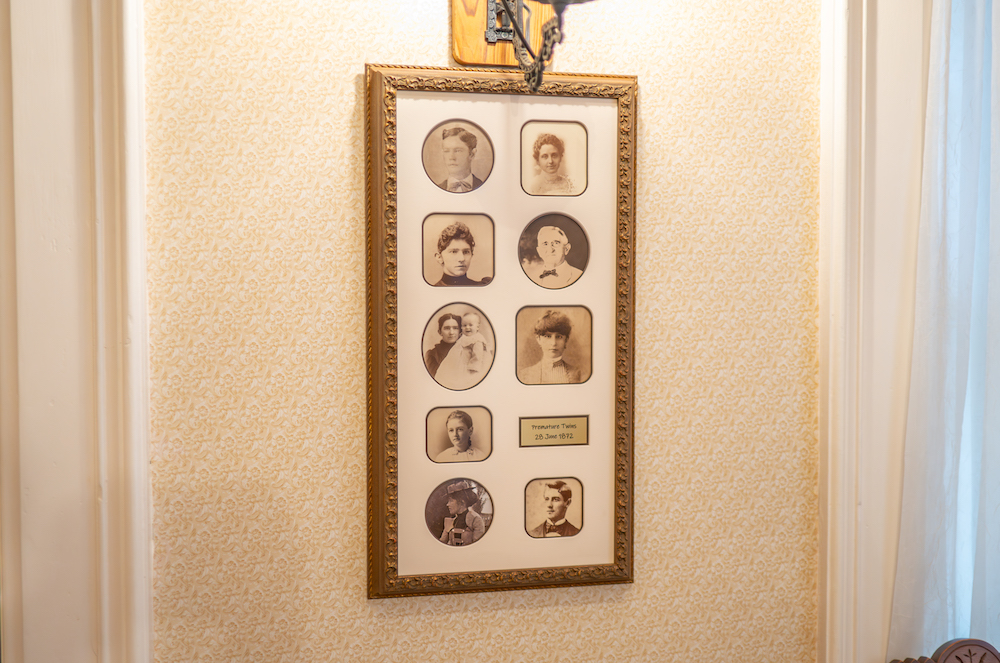Explore The Museum
at The Peel Museum & Botanical Garden
Foyer
As the first glimpse into the house, the foyer was specifically designed to impress the visiting guests.
The Parlor
The Study
Dining Room
Outdoor Kitchen
Upstairs
The rooms upstairs are more simply decorated compared to those downstairs, reflecting their private nature. Guests were not invited into the upstairs portion of the home, which housed the family’s personal rooms and bedrooms. These spaces contained some of their belongings, along with photographs of both immediate and extended family members.
When the family moved into the home, the oldest Peel child was 21, while the youngest had not yet been born. In fact, Mary Emaline was pregnant with their youngest child, Mary Ruby, who was the only one of their children born in this house. Alice was already married and never lived here, and it is believed that James, who was already practicing law by 1875, didn’t live here either. The seven other Peel children would have lived in the house until they established themselves in society, either through marriage or career.

